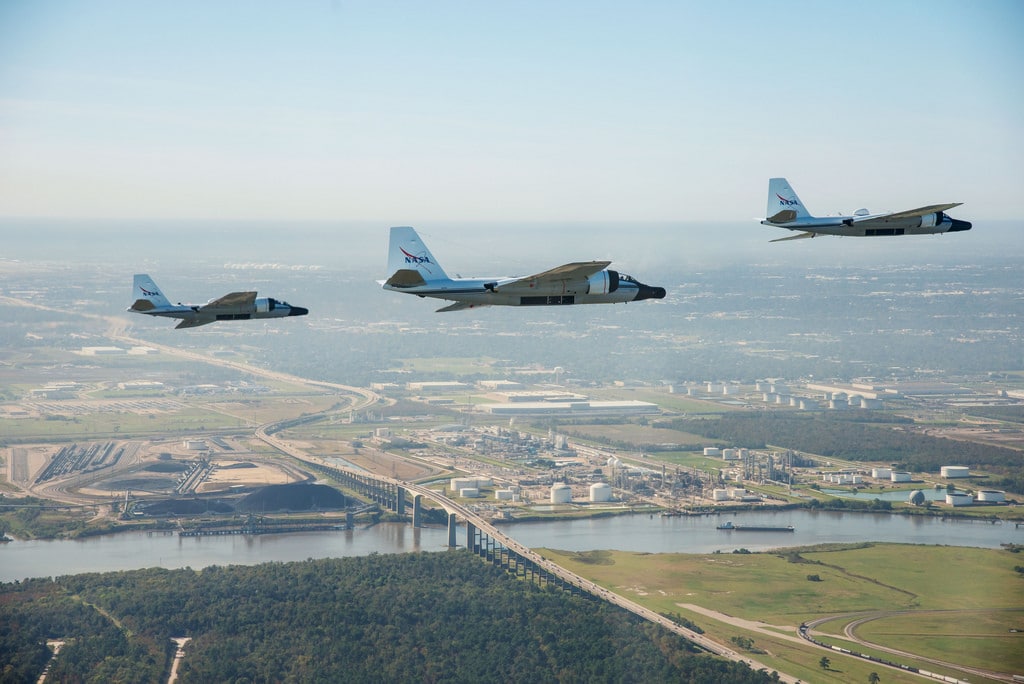July 26, 2015, marked the tenth anniversary of NASA’s Space Shuttle Return to Flight. On July 26, 2005, the Space Shuttle Return to Flight occurred with the launch of STS-114, the Shuttle mission that returned NASA to active flight status following the tragic loss of Columbia. Southern Research captured video of the launch using technology produced in its labs: Airborne Imaging and Recording System (AIRS) turrets, part of the WB-57 Ascent Video Experiment (WAVE). Two AIRS-WAVE equipped WB-57 aircraft flying at 60,000 feet in an orbit over Cape Kennedy were able to collect video of the Space Shuttle Discovery’s launch from ranges of up to 20 nautical miles. The AIRS-WAVE units provided full motion video (FMV) of the Space Shuttle Discovery, from lift off, to well beyond booster separation at 146,000 feet.
After the Space Shuttle Columbia disintegrated on reentry, the Columbia Accident Investigation Board recommended that NASA capture high resolution images of Shuttle launches from high altitude. Imaging the Shuttle from high altitude could provide NASA a perspective not available to ground-based cameras and would offer an additional means to identify damage incurred during launch. Southern Research provided the technology to capture these high-altitude images.
The AIRS design, fabrication, and integration effort was a joint endeavor between Southern Research and NASA’s Marshall Space Flight Center. The AIRS-WAVE development effort took 14 months to complete and yielded two turrets equipped with video cameras that could be mounted to the nose of NASA’s WB-57 high altitude research aircraft. The AIRS-WAVE turrets provided FMV of the Space Shuttle at extreme range and the video yielded valuable insight of Shuttle launch conditions not previously available to NASA.
Although only originally envisioned to provide video of NASA Shuttle launches, the AIRS turrets have also been used since 2005 by a variety of Southern Research’s government clients. The AIRS turrets continue to provide video of critical rocket launches and have been used for remote sensing operations and sensor research and development projects. The AIRS turrets have hosted multiple experimental sensor payloads and assisted with the transition of new technologies, from laboratory environments, to flight testing. The AIRS units have also been used to support flight testing and remote sensing operations in the U.S. and abroad.
Over the last 10 years, AIRS-related efforts have provided approximately $39 million in research and development work for Southern Research’s Engineering division. Southern Research is the prime contractor for NASA’s WB-57 Special Capabilities Support and Engineering Services Contract, a $36 million dollar contract which NASA and other government clients use to support current WB-57 operations.

